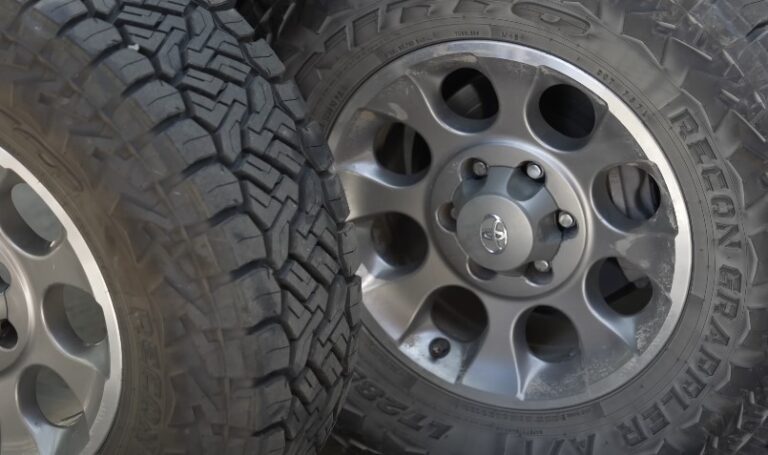A lot of truck owners say tire shopping feels like a maze. Numbers, letters, pressure ratings, speed symbols, and acronyms all jostle for your attention on a single sidewall.
Yet hidden in that maze is the single most important clue for safety, capability, and long-term savings: load range. Get that right, and most other choices fall into place.
Get it wrong, and you risk mushy handling, premature wear, or worse, an overloaded casing at highway speed. The good news is you can decode it.
With a few practical steps, it becomes clear which load range matches your truck’s real-world demands.
Contents
What Load Range Actually Means
Load range isn’t just a marketing label. It’s a class of casing strength tied to a maximum cold inflation pressure. In plain terms, it tells you how much weight the tire can safely carry when inflated to its rated pressure.
Higher load ranges support more pressure and more weight. Brands like Hubtrac tires are known for building casings that handle these demands. Light-truck tires express load range as a letter (C, D, E, F, etc.), and P-metric passenger tires use “SL” or “XL” designations.
A solid rule: size tires to your truck’s axle loads and operating pressures first, then think about comfort, off-road durability, and towing needs second. That order of operations makes every later choice – brand, tread pattern, even speed symbol – far easier.
Three Markings That Matter Most
1. Load Range Letters on LT Tires
Light-truck (LT) tires display a load range letter with a historical “ply rating.” The ply rating no longer reflects the actual number of plies; it’s a strength class.
For LT-metric, LT-flotation, and LT-numeric sizes, the Tire Rack reference table is a helpful guide:
| Load Range | Historical Ply Rating | Max Pressure ≤295 mm | Max Pressure >295 mm |
| B | 4 | 35 psi | – |
| C | 6 | 50 psi | 35 psi |
| D | 8 | 65 psi | 50 psi |
| E | 10 | 80 psi | 65 psi |
| F | 12 | 95 psi | 80 psi |
Moving from C to D to E brings higher allowable pressures and stronger casings. That’s what lets the tire carry more weight at a given size.
2. Load Index and Speed Symbol
Many LT tires also carry a service description, like 121/118S. The first number is the load index for single fitment, the second for dual rears, and the letter shows speed rating.
For dually pickups, that second number is critical. Yokohama’s sidewall guide shows how to read this format instantly, and Tire Rack hosts clear charts for load index and speed symbols.
3. P-Metric “SL” and “XL”
If your half-ton truck shipped with P-metric tires, you’ll likely see SL (Standard Load) or XL (Extra Load). Their max load pressures are standardized at 35 psi for SL and 41 psi for XL.
That’s the ceiling those casings are designed to handle.
Your Door Placard Is the True Starting Point
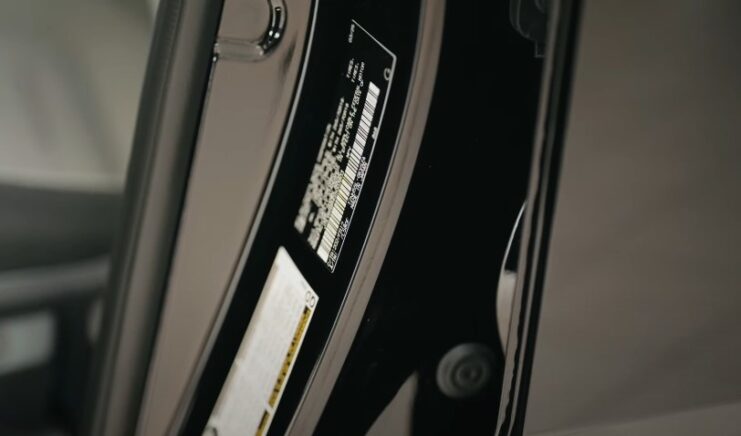
Every light vehicle sold in the U.S. with a GVWR under 10,000 lb must have a Tire and Loading Information placard. This is mandated by FMVSS 110 and is usually on the driver’s door or B-pillar.
It lists original tire size and recommended cold inflation pressures. Follow those pressures for the original size and type. They’re engineered to keep axle loads within limits. Important nuance: that placard does not change when you switch brands or load ranges in the same size.
You still need to meet axle loads at the pressures you plan to run. It’s your reference for axle safety margins, not a suggestion.
The 10 Percent De-Rating Rule for P-Metric on Trucks
Federal guidance de-rates P-metric tires by 10 percent when they’re used on a truck, MPV, or bus rather than a passenger car. Regulators kept the 1.10 divisor for precisely this case.
If your half-ton came on P-metric tires, the OEM already applied that rule. If you’re picking aftermarket P-metric tires for a truck or SUV, you must apply it yourself when checking axle capacity.
Step-by-Step – Sizing the Right Load Range
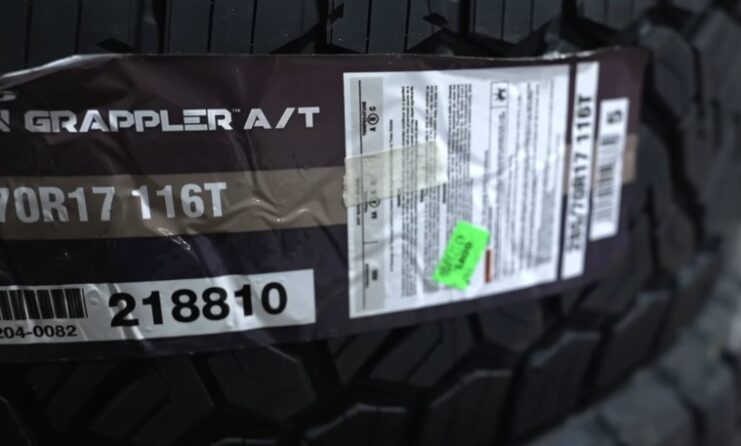
1. Gather Your Numbers
From the door jamb: GVWR, GAWR front and rear, and the placard pressures. If you tow, note typical tongue weight. Tongue weight sits on the truck, adding to the rear axle.
2. Weigh Your Truck as You Use It
Take your truck to a public scale loaded as you normally drive – passengers, gear, racks, fuel. Weigh the front axle and rear axle separately.
NHTSA consumer guidance for truck campers explains this method and states that individual axle loads must not exceed GAWR and total axle loads must not exceed GVWR.
3. Translate Axle Loads Into Tire Loads
Divide each axle weight by the number of tires on that axle. Then pick a tire that can carry at least that per-tire weight at your intended pressure.
This is where load and inflation tables come in. Many LT tires show higher capacity closer to their maximum rated pressure:
- Load Range C tires often cap at 50 psi
- Load Range D at 65 psi
- Load Range E at 80 psi
4. Confirm Wheel Ratings
Your wheel has its own maximum pressure and load. Never exceed the wheel rating even if the tire allows more. Michelin’s technical bulletins emphasize this warning.
5. Pick a Load Range That Covers Your Worst-Case Day
If your rear axle hits 4,000 lb when towing, a pair of tires at the rear must carry 2,000 lb each at the pressure you’re willing to run. Load Range D might be enough, but Load Range E gives margin for routine towing.
Tire spec pages help you sanity-check real loads and pressures. For instance, many LT235/80R17 E tires list max load near 3,085 lb at 80 psi with a service description like 120/117R.
6. Mind Speed Symbol and Intended Use
Most LT all-terrain and highway tires carry speed symbols in the Q, R, or S range. Speed ratings define maximum sustained speed when properly inflated and loaded.
7. If You Stick With P-Metric
Make sure the de-rated capacity meets your axle needs. P-metric SL and XL load at their standardized pressures, and the placard pressure was chosen to meet GAWR.
Real-World Scenarios
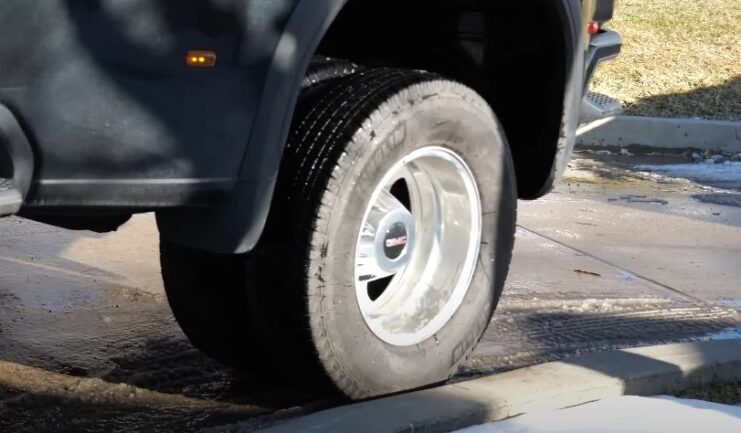
Example 1: Half-Ton Daily Driver with Light Towing
Weighed with family and weekend gear, the truck shows 3,100 lb front and 3,050 lb rear. Occasional 5,000 lb trailer with 10 percent tongue weight adds about 500 lb to the rear axle, bringing it to 3,550 lb.
Per-tire rear load is 1,775 lb. A quality LT Load Range C all-terrain might cover it at or near 50 psi, but a D leaves more cushion. Use spec pages to confirm the exact load at pressure.
Example 2: Work Truck with Tools and a Slide-In Bed System
Scale shows 3,200 lb front and 3,900 lb rear fully loaded. Per-tire rear load is 1,950 lb. A Load Range D could be enough on paper at 65 psi for some sizes, but if you often hit rough job sites and curbing, E gives a stronger casing and access to higher pressure.
Many common LT275/70R18 E tires list max loads around 3,640 lb at 80 psi, which is ample headroom.
Example 3: Dually Towing a Fifth-Wheel
The rear GAWR must not be exceeded, and the dual load index applies. A service description like 121/118R means 121 for singles, 118 for duals.
Make sure the dual number multiplied by two matches your axle math. Manufacturer spec pages show both single and dual capacities.
How a Higher Load Range Changes Ride, Braking, and Efficiency
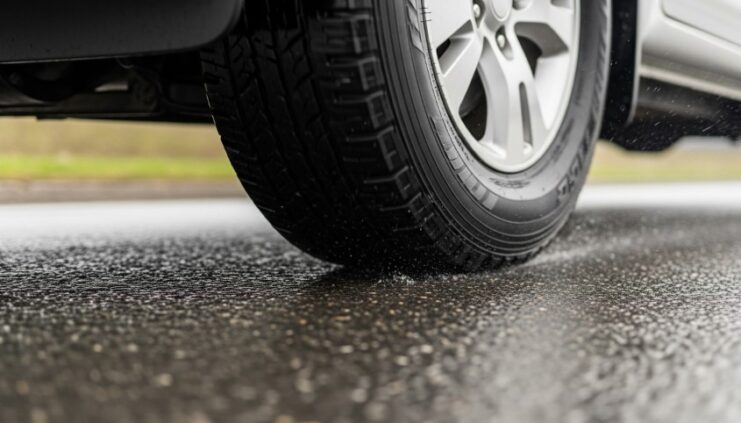
Choosing a stouter casing changes behavior:
- Pressure and stiffness: Higher load ranges are designed for higher pressures, which reduces deflection. Less deflection can feel firmer but also controls heat generation.
- Weight and rolling resistance: Many LT versions weigh more than P-metric versions in the same nominal size and require more pressure to carry the same load. Both factors can influence ride and fuel economy.
If comfort matters and your loads are modest, a Load Range C or D all-terrain can be a sweet spot. If you routinely tow near your truck’s limits or run heavy accessories, E is often the right call.
Reading Sidewalls and Spec Pages Like a Pro
Example string: LT275/70R18 125/122R Load Range E
- LT means Light Truck category.
- 275/70R18 is the size and construction.
- 125/122R is the service description: 125 is the single load index, 122 is the dual load index, R is the speed symbol.
- Load Range E indicates the casing strength class and the pressure ceiling.
If you’re moving from P-metric to LT, remember the 10 percent de-rating rule and the higher inflation needed by LT to carry the same load.
Special Cases Worth Knowing
- Euro-Metric “C” Commercial Van Tires: End with a C in the size, for example 225/75R16C. They use load index and a higher pressure scale. Check the sidewall and spec for the exact single and dual ratings and max pressure.
- ST (Special Trailer) Tires: Use their own load ranges. Do not swap ST and LT casually, especially on heavy trailers. The tables and speed ratings differ.
- Deep-Tread LT Tires: Radials with tread depths of 18/32 in or greater may be excluded from FMVSS 139 and covered by FMVSS 119 instead, affecting labeling and test requirements.
- UTQG on LT Tires: UTQG applies to passenger car tires. Many LT tires are not required to display UTQG grades and are often listed as “UTQG: None” on spec sheets.
Inflation and Maintenance That Protect Your Investment
- Use Cold Inflation: Set pressures when the tires are cold, before driving or sun exposure.
- Match Pressure to Load: Use the placard for OE fitment or manufacturer charts when you change type or load.
- Check Monthly: Light truck tires often lose 1 to 2 psi per month, and another 1 to 2 psi for each 10 °F drop in ambient temperature. A quick gauge check prevents overload by under-inflation.
- Respect Wheel Limits: Never exceed the wheel load or pressure rating, even if the tire allows more.
- Mind TPMS Thresholds: If you change to a much higher load range and run higher pressures, ask your shop about TPMS settings so alerts remain meaningful.
Quick Decision Framework
| Usage Profile | Likely Load Range | Key Checkpoints |
| Mostly commuting and light home-center runs on a half-ton | P-metric SL or XL, or LT C/D | Confirm capacity vs GAWR with the de-rating rule if using P-metric |
| Frequent towing with bed rack or slide-in gear | LT D or E in OEM size | Verify rear-axle math and pressure |
| Heavy overland build with steel bumpers and winch | LT E for extra casing strength and pressure range | Tune cold pressure to actual scaled weights |
| Dually used near max combined weight | Dual load index must meet rear GAWR with margin | Not just the single figure |
A Few Real Spec Snapshots for Reference
- LT255/80R17 Load Range E examples show 121/118R, max load around 3,195 lb and max inflation 80 psi.
- BFGoodrich All-Terrain KO3 in LT265/70R17 C lists max load around 2,470 lb at 50 psi. The same model in LT275/60R20 D lists 3,000 lb at 65 psi.
- Many LT275/70R18 E highway tires list max load near 3,640 lb at 80 psi with service descriptions like 125/122R.
Those numbers give a feel for how capacities step up with load range.
FAQs
Bottom Line
Start with your axle loads, your placard pressures, and your real use. Choose the load range that meets or exceeds your per-tire load at the pressure you’ll actually run.
Keep an eye on wheel ratings, dual vs single indexes, speed symbol, and TPMS. Use manufacturer load and inflation resources or trusted tech pages when you step away from the original tire type.
Do the math once, and tire shopping becomes simple, and safe.
